Kitchen faucets with soap dispensers have become a popular and functional addition to modern kitchens, offering a blend of convenience, style, and hygiene. In recent years, kitchen faucets have evolved beyond their primary purpose of dispensing water. They now come with multiple features that enhance both functionality and design, and one of the most practical additions has been the built-in soap dispenser. These integrated soap dispensers eliminate the need for separate soap bottles cluttering the sink area, providing a sleek, streamlined look to any kitchen. Moreover, they ensure that soap is always easily accessible while cooking or cleaning.
The decision to include a soap dispenser in your kitchen faucet setup offers several advantages. First, it increases efficiency in the kitchen by ensuring soap is readily available when needed. A soap dispenser that’s integrated or installed near the faucet allows the user to wash their hands, clean dishes, or rinse fruits and vegetables quickly without having to reach for a separate soap bottle. The convenience of this feature minimizes interruptions during meal preparation, making tasks flow more smoothly. It’s also more hygienic, as soap bottles can harbor germs and bacteria, especially if multiple people are using the kitchen.

Another advantage of a kitchen faucet with a soap dispenser is the aesthetic appeal. These designs contribute to a cleaner, more organized kitchen space by reducing clutter. Kitchen counters can often become overcrowded with various items, such as dishwashing liquid and sponges. Having a built-in soap dispenser eliminates the need for additional bottles on the countertop, making it easier to maintain a neat and visually appealing kitchen. Many of these faucets are designed to blend seamlessly with the kitchen’s overall style, whether it’s contemporary, traditional, or somewhere in between.
Kitchen faucets with soap dispensers are available in a wide range of styles, materials, and finishes. These options allow homeowners to choose a faucet that complements the existing decor. Some of the most common finishes include chrome, stainless steel, brushed nickel, and matte black. Stainless steel and chrome finishes, in particular, are popular choices because they are durable, easy to clean, and resistant to rust and corrosion. Matte black faucets, on the other hand, have gained traction for those seeking a bold, modern statement in their kitchen.

When selecting a kitchen faucet with a soap dispenser, it’s important to consider the overall kitchen layout and the specific needs of the household. The height and reach of the faucet should be compatible with the size and shape of the sink. A faucet that is too high may cause excessive splashing, while one that is too low may not provide enough clearance for washing large pots or pans. In addition, the soap dispenser’s location should be convenient, ensuring that users can easily access it without having to reach awkwardly across the sink.
For those who prefer eco-friendly kitchen solutions, a kitchen faucet with a soap dispenser can support sustainable habits. Soap dispensers often have adjustable settings, allowing users to control the amount of soap dispensed. This helps to avoid unnecessary waste, ensuring that only the necessary amount of soap is used. Moreover, users can refill the soap dispenser with environmentally friendly, biodegradable soaps, further reducing their ecological footprint.
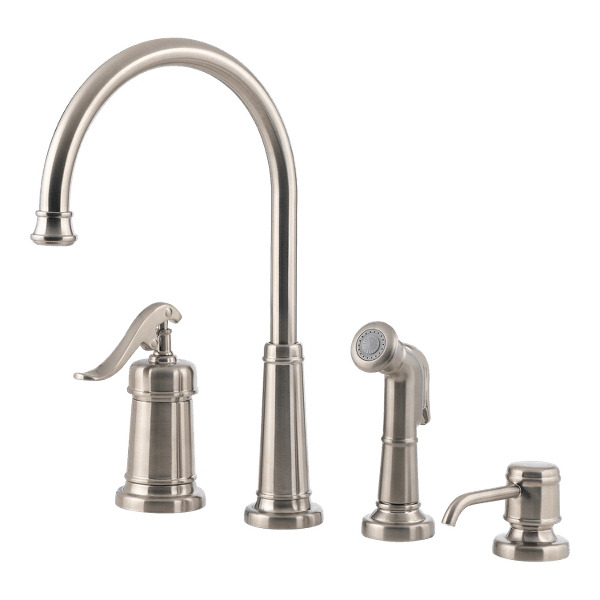
One key feature of kitchen faucets with soap dispensers is their ease of installation. Most models are designed to be installed without the need for professional assistance, making them accessible to DIY enthusiasts. Many faucets come with detailed instructions and all the necessary hardware, including hoses, mounting plates, and soap dispenser parts. Homeowners can typically install these faucets in less than an hour, provided they have basic plumbing knowledge and the right tools.
A significant benefit of faucets with soap dispensers is that they reduce the number of touchpoints in the kitchen. With fewer items to touch, such as soap bottles and dishwashing liquid containers, there is a reduced risk of cross-contamination, especially when handling raw meat or dirty dishes. This hands-free approach enhances kitchen hygiene and is particularly useful in households with young children or elderly family members who may need assistance with handwashing.
Many kitchen faucets with soap dispensers also offer advanced features that further enhance functionality. For example, touchless faucets, which are equipped with motion sensors, allow users to activate the water flow without physically touching the faucet handle. This touchless technology pairs perfectly with a soap dispenser, promoting a completely hands-free washing experience. Pull-down or pull-out sprayers are other popular features that add versatility to these faucets, allowing users to extend the faucet’s reach and rinse different areas of the sink more effectively.
It’s also worth noting the importance of durability when selecting a kitchen faucet with a soap dispenser. Given the heavy usage these faucets endure, especially in busy households, it’s essential to choose a model made from high-quality materials. Faucets with ceramic disc valves are particularly reliable, as they provide long-lasting, drip-free performance. Homeowners should also look for soap dispensers with large, easy-to-refill reservoirs, reducing the frequency of refills.
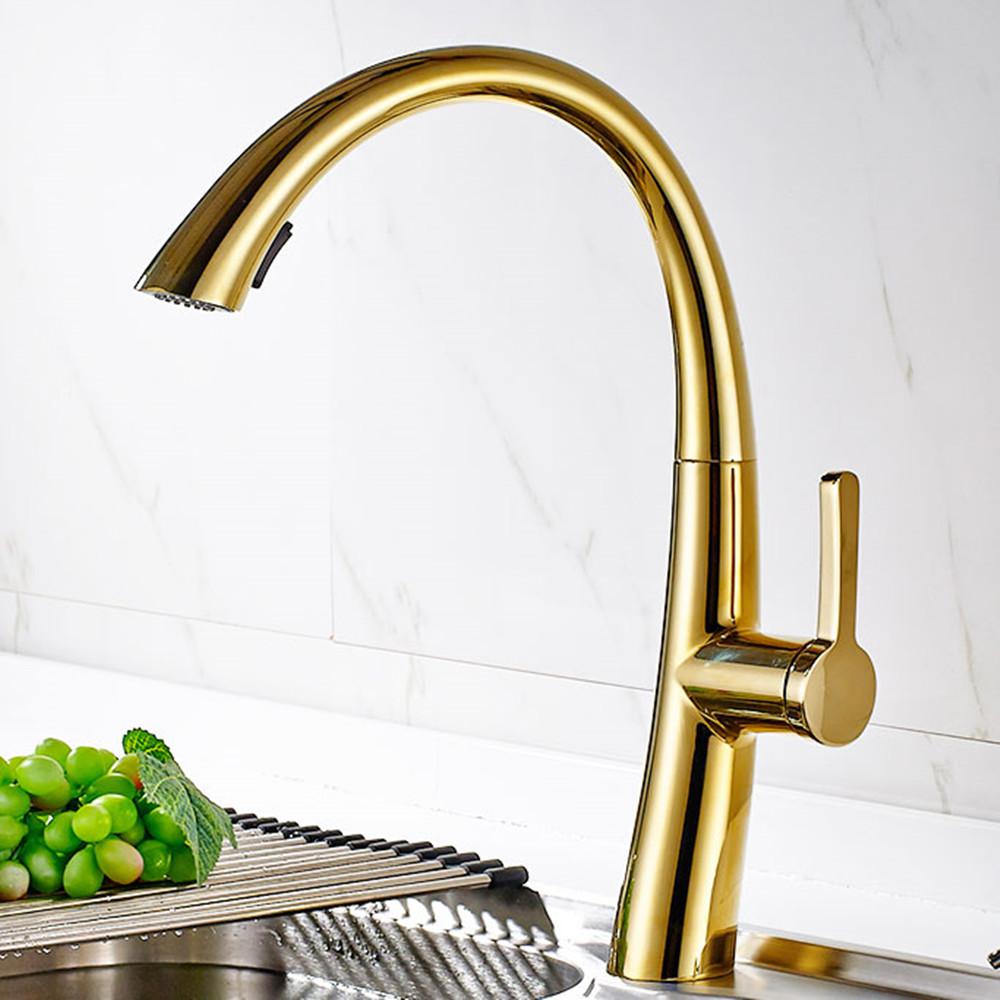
In addition to functionality, the design of the soap dispenser should not be overlooked. Many soap dispensers are ergonomically designed, with pump mechanisms that are easy to use even for those with limited hand strength. Some models feature sleek, minimalistic designs, while others come with ornate detailing that adds a decorative touch to the kitchen. When choosing a soap dispenser, it’s important to ensure it matches the faucet in terms of finish and style to maintain a cohesive look.
Kitchen faucets with soap dispensers also contribute to improved water conservation. Some faucets come with water-saving features such as aerators, which reduce water flow without sacrificing pressure. This is especially beneficial in regions where water conservation is a priority. Coupled with the soap dispenser’s ability to dispense controlled amounts of soap, these faucets offer an eco-friendly solution for the modern kitchen.
A common concern when it comes to kitchen faucets with soap dispensers is maintenance. Fortunately, most modern models are designed to be easy to clean and maintain. Soap dispensers are typically made of materials that resist corrosion, and many faucets are treated with finishes that prevent water spots and fingerprints. Regular cleaning with a mild detergent and a soft cloth is usually sufficient to keep both the faucet and soap dispenser looking their best.
Finally, kitchen faucets with soap dispensers can enhance the overall user experience by making the kitchen a more functional and enjoyable space. Whether you’re an avid cook who spends hours preparing meals or someone who simply appreciates an organized kitchen, these faucets offer a practical solution that can simplify daily tasks. They are not only a smart investment in terms of functionality but also add to the aesthetic appeal of the kitchen, increasing its overall value.

Common Mistakes to Avoid:
When choosing and installing a kitchen faucet with a soap dispenser, there are a few common mistakes that homeowners should avoid. First, don’t overlook the importance of compatibility. Ensure that the faucet and soap dispenser are compatible with the size and layout of your sink. A faucet that’s too large can overwhelm a small sink, while a small faucet may look out of place in a larger setup.
Second, avoid choosing a faucet based solely on its appearance without considering functionality. It’s essential to prioritize practical features such as height, reach, and water-saving options rather than focusing only on the faucet’s design.
Another mistake is neglecting the quality of the materials. Opting for a lower-priced faucet may save money initially, but it could lead to costly repairs or replacements down the line. Always choose faucets made from high-quality materials like stainless steel or brass for long-term durability.
Also, ensure that the soap dispenser is easy to refill. Some models require you to access the dispenser from under the sink, which can be inconvenient. Choosing a top-fill soap dispenser eliminates this hassle. Finally, improper installation can lead to leaks and other issues, so it’s crucial to follow the manufacturer’s instructions carefully or consult a professional if needed.
![]()
Are kitchen faucets with soap dispensers difficult to install?
Most kitchen faucets with soap dispensers are designed for easy installation and come with detailed instructions. Many homeowners with basic plumbing knowledge can install these faucets themselves in less than an hour. However, for more complex setups or if you’re unsure, it’s always best to consult a professional to avoid issues like leaks or improper mounting.
How do you refill a built-in soap dispenser?
Refilling a built-in soap dispenser is generally straightforward. For top-fill models, you simply unscrew the pump from the top of the dispenser, pour in the soap, and screw it back in place. For other models, you may need to access the reservoir from underneath the sink, though this can be less convenient.
What materials are best for kitchen faucets with soap dispensers?
Stainless steel, chrome, and brushed nickel are popular materials due to their durability, resistance to corrosion, and ease of cleaning. These materials also provide a modern and sleek look to the kitchen. Brass is another excellent choice for its longevity, although it’s typically more expensive.
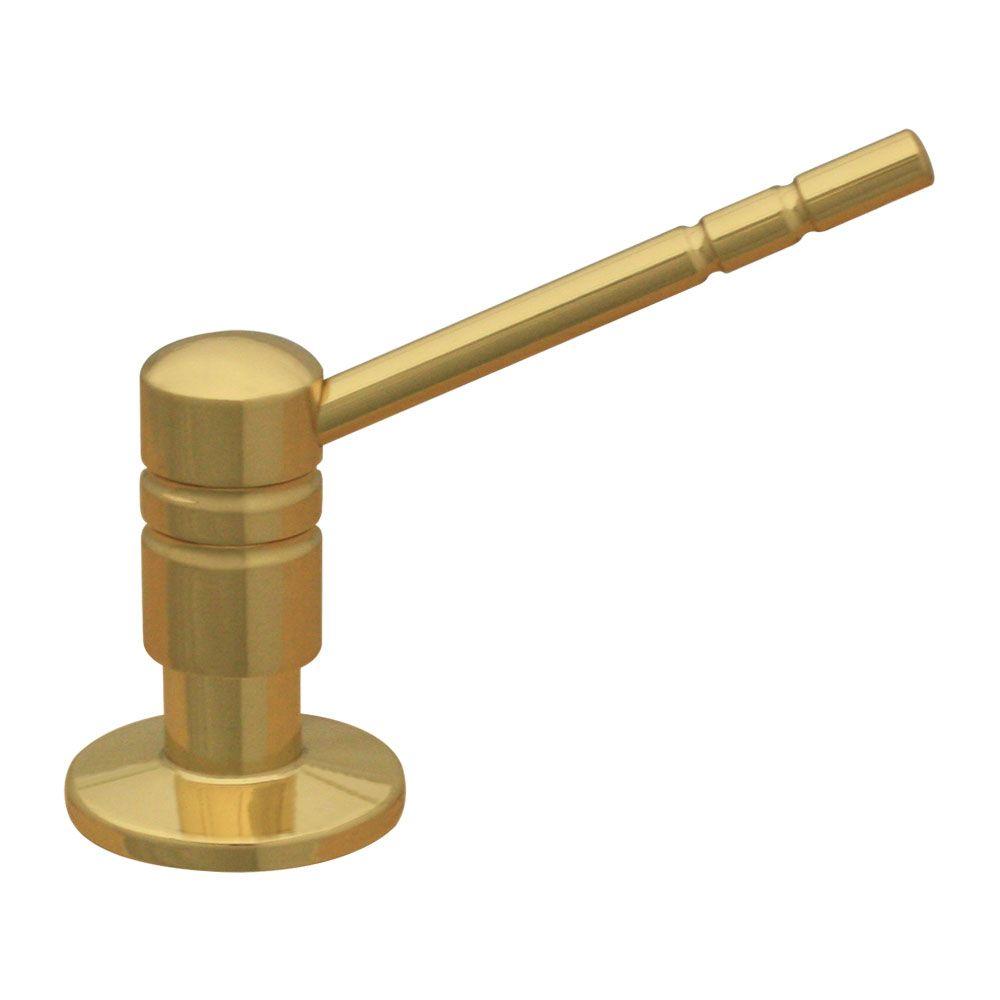
Are touchless kitchen faucets with soap dispensers worth the investment?
Touchless kitchen faucets offer enhanced convenience and hygiene, as they reduce the need for physical contact, minimizing the spread of germs. Paired with a soap dispenser, they provide a hands-free washing experience, making them a great investment, particularly for busy households or those concerned with hygiene.
Can you use any soap with a built-in dispenser, or are there specific types?
Most built-in soap dispensers are compatible with a variety of liquid soaps, including dish soap, hand soap, and even hand sanitizer. However, it’s essential to avoid using soaps that are too thick or contain abrasive materials, as they can clog the dispenser. Diluting thicker soaps slightly with water can help prevent clogging.
What should you consider when replacing an old kitchen faucet with one that includes a soap dispenser?
When replacing an old faucet, consider the number of holes in your sink. Some faucets with soap dispensers require multiple holes, so if your sink only has one hole, you may need to drill additional ones or use a deck plate. Additionally, ensure that the new faucet’s size and style complement your kitchen’s overall design.

Modern Simple 304 Stainless Steel Sink Thicken Single Bowl Kitchen Washing Sink with Drain
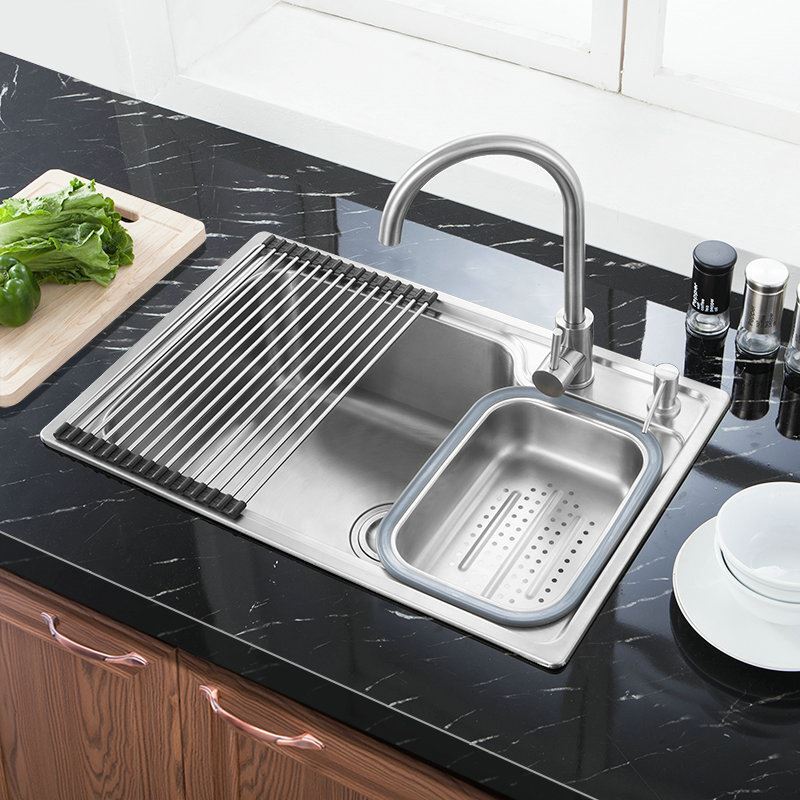
Modern Simple 304 Stainless Steel Sink Double Bowl Kitchen Washing Sink with Drain Board Drain
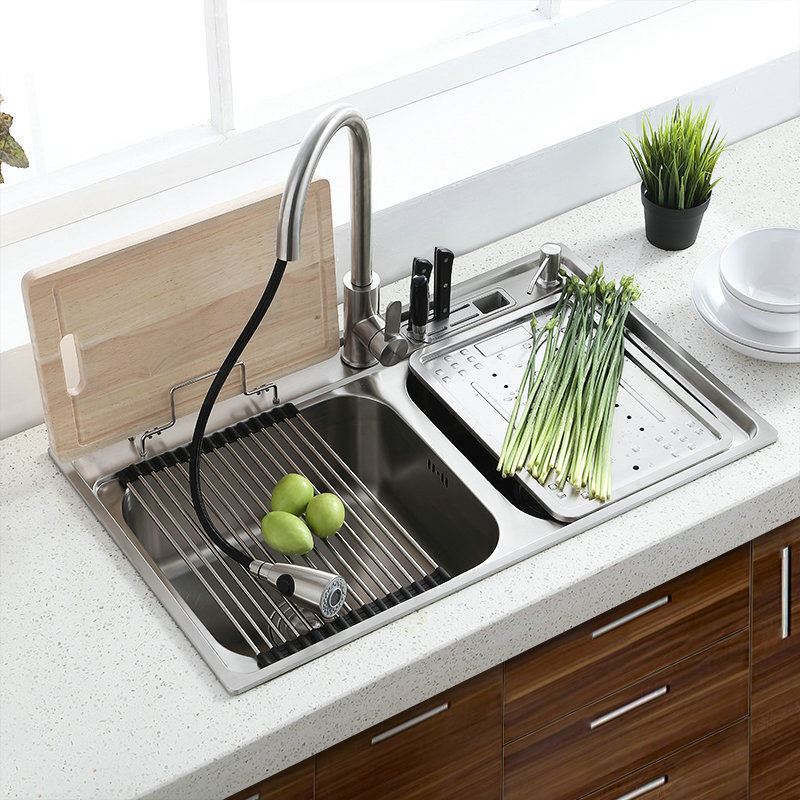
Modern Simple 304 Stainless Steel Sink Double Bowl Kitchen Washing Sink with Drain Basket and

For the Love of Character: Kitchen Faucet Update
Modern Unique Kitchen Faucet Designs
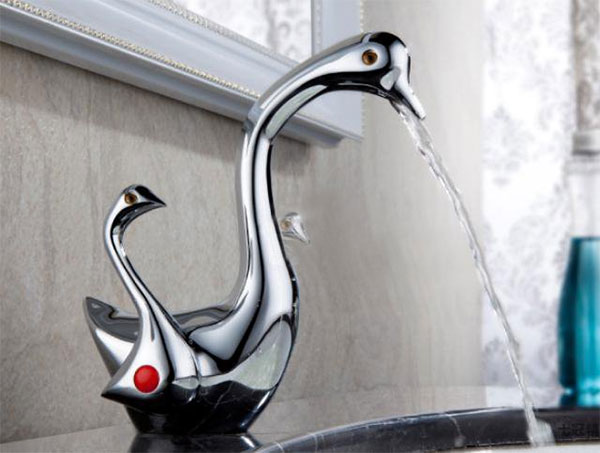
Related Posts:
- Aquasource Brushed Nickel Pull Down Kitchen Faucet
- Pegasus 9000 Kitchen Faucet
- How Much Does It Cost To Replace A Kitchen Faucet
- Delta Lewiston Faucet Kitchen
- Old Fashioned Kitchen Faucet
- Single Hole Kitchen Faucet Hole Size
- How To Change Your Kitchen Faucet
- Hansgrohe Talis C Kitchen Faucet Reviews
- Kohler Kitchen Faucet With Side Spray
- Moen Kitchen Faucet Low Pressure